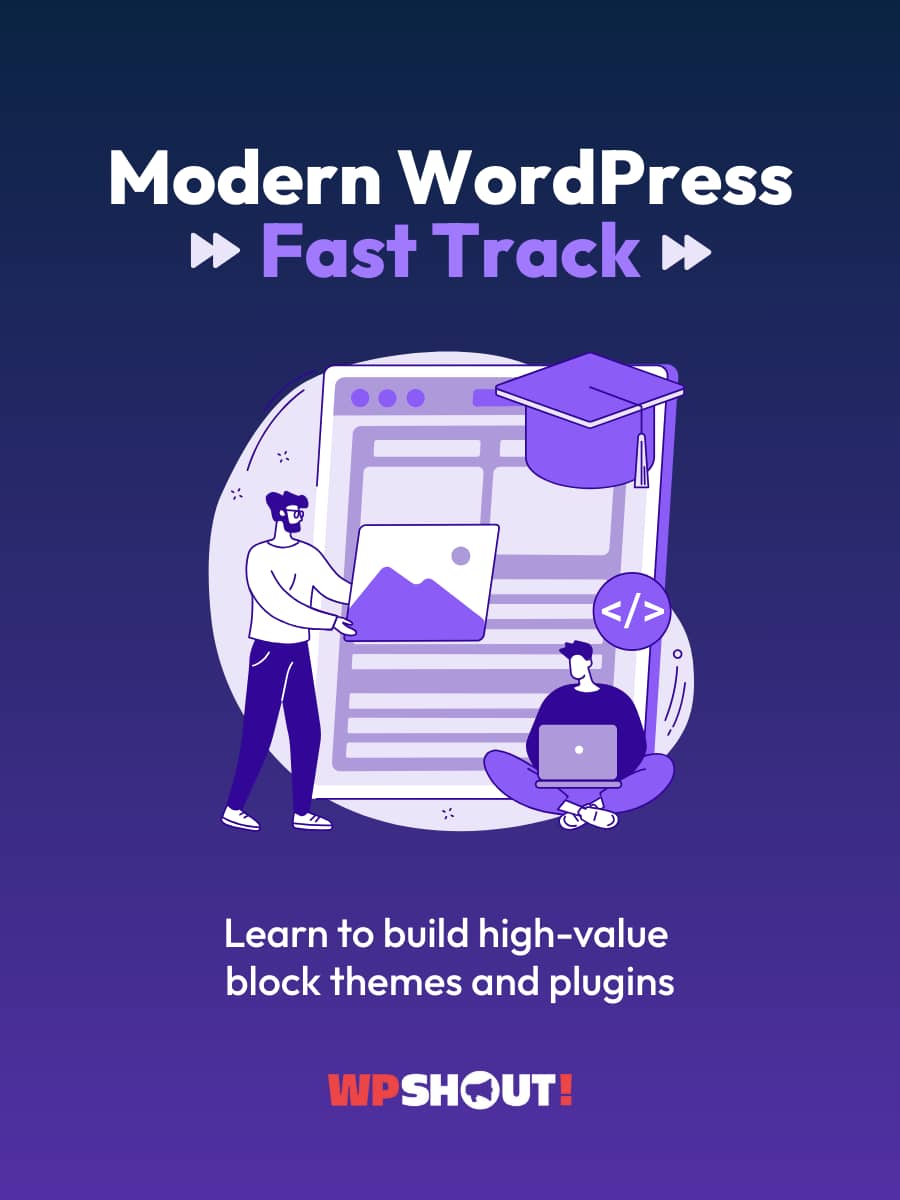Welcome to our free course on object-oriented PHP (OOPHP) for WordPress. This course explains the following:
- The object-oriented paradigm in software development, and its strengths and weaknesses relative to other paradigms,
- The core concepts of object-oriented programming in PHP with code examples,
- A few advanced topics in OOPHP that are especially useful in WordPress development, and
- How object-oriented code can best fit into the broader WordPress software system.
After the main course content, we link you to our courses on the two most important object-oriented systems in WordPress: WP_Query and the Widgets API.
Before we dive in, an invitation. If you want to better understand modern WordPress development, have a look at our full “learn WordPress development” course, Modern WordPress Fast Track. It’s the best current guide to WordPress development out there.
Master Modern WordPress Development 🏆
Get ‘Modern WordPress Fast Track’ today
Become a WordPress Developer Who Can Build Anything

Presale is currently open with 40% OFF until May 23rd, 2025. 🚀
Course starts June 1st.
We have prepared special bonuses for everyone who enrolls during this period! 🎁
Enjoy this free course on OOPHP!
1. Object-Oriented Programming as a Software Paradigm
What is object-oriented programming at a conceptual level? Why is it better (or worse) than its alternatives? Start here for a comparison of OOP with both procedural and functional programming.
The Three Development Paradigms: Procedural, Object-Oriented, and Functional
2. Introduction to Object-Oriented PHP
Object-oriented programming revolves around two fundamental concepts: classes and objects. Learn what those concepts mean and how they interact, with code examples, in this core introduction to OOPHP.
Introduction to Object-Oriented PHP for WordPress Developers
3. Understanding Class Inheritance in PHP
Class inheritance (child and parent classes) is a core feature of object-oriented programming. Learn how class inheritance functions in OOPHP, with clear code examples.
Understanding Class Inheritance (Child and Parent Classes) in Object-Oriented PHP
4. The __construct() Magic Method
In OOPHP, a class’s __construct() method will run anytime an object of that class is instantiated. Learn how __construct() works and what it’s good for.
5. How to Combine Object-Oriented Code with WordPress’s Hooks System
This article takes a practical look at one of the most immediate questions writing object-oriented code for WordPress: How should classes and objects interact with WordPress’s event-driven hooks system?
6. Introduction to Static Methods
Static methods are a somewhat advanced topic in object-oriented PHP that’s helpful to understand. This article introduces the topic and gives a simple code example.
PHP Static Methods in Depth: What They Are & How they Work in WordPress
Further Reading
Now that you understand the fundamentals of object-oriented programming in PHP, you’re more than ready to encounter WordPress’s two most important object-oriented systems: the Widgets API and WP_Query.
Lastly, knowing how to combine object-oriented code with WordPress’s hooks system is most helpful for custom plugins you’ll design yourself—so if you haven’t dipped your toe into plugin development, now’s the time. Here’s a free Crowdcast video we recorded that walks you through writing a plugin from scratch.
Thanks for reading! As always, we’d love to hear any thoughts questions in the comments below, or in our Facebook group.

